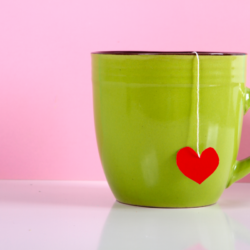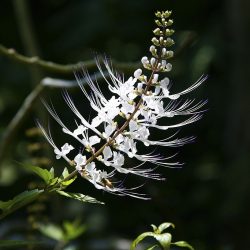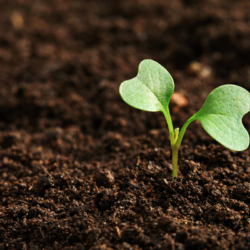The quest for optimal health and natural well-being often leads us to rediscover nature’s hidden treasures. Among these, sweat-inducing plants occupy a special place in the field of phytotherapy and body detoxification. These plants, which have the remarkable ability to stimulate the production of sweat, play an essential role in eliminating the toxins accumulated in our bodies. In this article, we take an in-depth look at the mysteries and benefits of plants such as garlic, lemon balm, bay leaves, cinnamon, ginger and cloves. We invite you on a journey to the heart of nature, where science and tradition meet to offer natural, effective solutions for maintaining and improving your health. Discover how these ancient plants can contribute to your daily well-being, boost your immune system and help you live a healthier, more balanced life.
- Definition and importance: Sweat plants are plants that stimulate the production of sweat, a natural process for eliminating toxins from the body. Their medicinal properties are widely recognised, particularly in the treatment of cold symptoms and certain respiratory infections.
- Overview of plants mentioned: Among the best-known sweat-inducing plants are garlic, lemon balm, bay leaf, cinnamon, ginger and clove. Each of these plants has unique characteristics and offers specific health benefits.
Garlic (Allium sativum)
Now let’s delve into the fascinating world of garlic (Allium sativum), a natural treasure with multiple virtues, recognised for thousands of years for its sudorific properties and its incredible benefits in the body’s detoxification process.
Botanical attributes
Garlic and phytotherapy
Garlic, Allium sativum, is a culinary ingredient renowned for its unique flavour and sudorific properties. It is used to stimulate detoxification of the body. Its composition, mainly aqueous (64%), also includes :
- carbohydrates (27.5%),
- proteins (6%)
- and fibre (3%).
- Rich in beneficial compounds such as prostaglandin, phenolic acids, phytosteroids, polyphenols and flavonoids
- Source of various vitamins and minerals.
It contains vitamins B1, B2, B3, B5, B6, C, E, A, and minerals such as potassium, sulphur, phosphorus, calcium, magnesium, sodium, chlorine, as well as essential trace elements. Its medicinal properties include lipid-lowering and anticoagulant effects, useful against atheroma, antihypertensive, chelating, antioxidant, immunostimulant and anticancer effects. Around 4% of the American population and 10% of the Australian population use garlic for medicinal purposes.
Among its active compounds, garlic contains inulin, a prebiotic. It also contains allicin, known for its antibacterial, anti-infectious and antiviral properties. Garlic also contains anticoagulant agents, which can interact with certain medicines. Studies indicate that garlic may reduce the risk of colds, high blood pressure and certain types of cancer. The enzyme alliinase, necessary for these effects, requires a waiting period after crushing raw garlic before consumption. Garlic is also used to treat various mycoses, including athlete’s foot.
Detoxification benefits
Despite these effects, garlic remains a key ingredient in many everyday dishes. It contains volatile substances which, once ingested, are absorbed by the blood and lungs. They are then released through the skin and breathing, producing strong and often undesirable aromas.
In addition to its ability to stimulate perspiration, garlic has notable antiseptic and antibacterial properties. These characteristics make it a valuable ally in the prevention and fight against various infections. Garlic helps to strengthen the immune system, offering increased protection against pathogens. Regular use in the diet can therefore play a key role in maintaining good health and resistance to infection.
Lemon balm (Melissa officinalis)
Let’s turn our attention to Lemon Balm (Melissa officinalis), a plant with a lemony fragrance and soothing properties, which stands out not only for its role in improving mental well-being, but also for its ability to promote the body’s natural detoxification process.
Botanical attributes
Use as an infusion
Lemon balm, renowned for its aromatic leaves, is widely used in phytotherapy, particularly as an infusion for its sudorific properties. It effectively stimulates perspiration. This natural mechanism is essential for regulating body temperature, and is particularly useful in cases of low-grade fever. Stimulating sweating also encourages the elimination of toxins from the body. It can help to lower body temperature during feverish periods.
Although lemon balm water is known for its antispasmodic properties, it has no effect on bruxism. Lemon balm tea is appreciated for its astringent taste and lemony aroma, as well as its tonic and stimulating qualities. Its polyphenols have antiviral effects, particularly against herpes, and can reduce skin rashes. It also has antispasmodic and digestive properties.
In herbalism, lemon balm is prized for its calming and relaxing properties. It regulates nervous impulses, helping to reduce tachycardia and gastric and intestinal spasms. It is also effective against insomnia, nervous tension and certain viral infections. Its essential oil, rich in citral, citronellol, eugenol, geraniol, flavonoids, polyphenols and triterpenoids, contributes to its effectiveness.
To prepare an infusion of lemon balm, simply immerse two branches of the plant in a litre of cold water. Then bring to the boil. Finally, leave to infuse for 10 minutes and strain. This infusion, drunk warm or chilled, is beneficial for digestion and relieves colds, coughs and stress. Lemon balm is on the official list of French pharmacopoeia. It is used to soothe sleep disorders and menstrual tension. It is an excellent antioxidant and can be used on an occasional or long-term basis as required.
Laurel (Laurus nobilis)
Next, let’s explore the virtues of Laurel (Laurus nobilis), an emblematic shrub of the Mediterranean basin, whose aromatic leaves have long been prized for their powerful sudorific properties and their significant contribution to the natural purification of our bodies.
Botanical attributes
Preparation and use as an infusion
Cinnamon (Cinnamomum verum)
We now turn to Cinnamon (Cinnamomum verum), this warm, exotic spice renowned for its enchanting fragrance and sweat-inducing properties, playing a crucial role in boosting health and naturally detoxifying the body.
Botanical attributes
Herbal properties
Cinnamon, famous for its warm, spicy aroma, is a spice with many virtues, not least its ability to warm the body. It stimulates sweating, a natural mechanism for regulating body temperature and eliminating toxins. This thermogenic property makes cinnamon particularly effective in the treatment of respiratory disorders, by encouraging perspiration.
In addition to its sudorific effect, cinnamon has expectorant properties, helping to clear the respiratory tract. As a result, it has been used in a variety of traditional remedies to relieve coughs, congestion and other cold and flu symptoms. Consuming cinnamon makes breathing easier and speeds up recovery.
Cinnamon’s active ingredients include cinnamaldehyde, cannaldehyde, polyphenols and tannin. Cinnamaldehyde, which makes up 60-80% of Ceylon cinnamon essential oil, is effective against intestinal and stomach disorders. Cannaldehyde gives cinnamon its sweet taste. Polyphenols, found mainly in the powder, have anti-inflammatory effects and help fight infection. Tannin reinforces the anti-infectious action and is effective against diarrhoea.
Ceylon cinnamon has antiseptic, antiviral and antibacterial properties, useful against infections. It stimulates the adrenocortical glands, acting as an anti-diarrhoeal remedy. It is recommended for treating respiratory illnesses such as bronchitis, asthma, colds and flu. Its anti-parasitic and anti-fatigue properties make it an ally against parasites and fatigue. Cinnamon is also beneficial for digestion, relieving stomach heaviness, bloating and mild gastrointestinal spasms.
Ginger (Zingiber officinale)
Let’s enter the world of ginger (Zingiber officinale), a spicy root with distant origins, famous for its pungent taste and impressive sudorific qualities, effectively helping to purify and energise our bodies.
Botanical attributes
Ginger officinale(Zingiber officinale) is a species of plant native to India. It belongs to the genus Zingiber and the Zingiberaceae family. Its rhizome is highly prized in traditional cooking and medicine, and is a spice commonly used in many Asian cuisines, particularly Indian. In the West, ginger is used to make ginger ale and desserts such as gingerbread. It differs from Japanese ginger, which is distinguished by the consumption of its flower buds.
This herbaceous tropical perennial grows to a height of around 0.90 to 1 metre and develops from a rhizome. Ginger leaves are evergreen, lanceolate and pleasantly fragrant. They are arranged in a biserial shape. Ginger flowers are white and yellow, with red spots on the lips, and are accompanied by green and yellow bracts. After flowering, small black seeds take their place inside trivalve capsules. These capsules are located on a low, scale-covered axillary spike.
Ginger prefers sunny exposures and humid atmospheres. It grows rapidly and multiplies by dividing its rhizomes. Historically, it was called “zenj” by Arab traders, a term also used to designate the inhabitants of the east coast of Africa, particularly Zanzibar, a major ginger trading centre.
In the Middle Ages, Saint Hildegard of Bingen mentioned Zingiber officinale, considering it harmful for healthy people, but beneficial for those who were weak or dry. At the time, ginger was seen as a magical plant with aphrodisiac properties.
Health benefits
Ginger, famous for its medicinal properties, is a root renowned for effectively stimulating perspiration. This characteristic is crucial for regulating body temperature and eliminating toxins, making ginger particularly useful against cold and flu symptoms.
In addition to its ability to promote sweating, ginger is a powerful anti-inflammatory, useful for relieving pain and reducing fever. Used as an infusion or added to a variety of recipes, it helps reduce the discomfort associated with respiratory illnesses and speeds up the healing process. Ginger contains starch, protein, fat, essential oil and resin.
The sensation of warmth when ginger is consumed comes from shogaol, paradol and zingerone. Gingerol, contained in fresh ginger, undergoes a reduction in concentration during the drying process, while shogaol increases.
In Asia, ginger has long played an important role for its many medicinal properties. In particular, it is used as an anti-emetic and anti-migraine agent. It also plays an essential role in relieving kinetosis and morning sickness during pregnancy. It protects the gastric mucosa, combats biliary and pancreatic insufficiency, and reduces LDL cholesterol and triglyceride levels.
In traditional medicine, ginger is classified as a yang element, playing a crucial role in rebalancing excess yin. Its main action is to promote sweating, making it a preferred choice for treating ailments resulting from exposure to the cold. In addition to its beneficial effects on cholesterol, ginger also has a positive impact on libido. Ginger tea promotes perspiration and is an effective remedy for the onset of colds and flu.
Clove (Syzygium aromaticum)
Let’s discover the secrets of Clove (Syzygium aromaticum), an ingredient with intense, bewitching aromas, renowned for its powerful sweat-inducing properties and its remarkable ability to promote detoxification and strengthen our overall health.
Botanical attributes
Clove tree (Syzygium aromaticum) belongs to the Zingiberaceae family. Native to Indonesia, this tree produces cloves, a spice derived from its flower buds. It is a bushy, evergreen tree, 8 to 20 metres tall. Several parts of the clove tree, including the leaves and bark, are aromatic. The bright green leaves have aromatic oil glands on their underside. They are elliptical in shape and up to 13 cm long.
The clove’s flowers, grouped in small clusters, change from pale to bright red as they mature. The flower buds, consisting of a long ovary containing four sepals and a small ball of petals, are harvested and then dried to produce the spice. As the flower develops, the petals give way to white-yellow stamens surrounding a stigma.
Flowering varies from region to region, and harvesting begins when the plant is four years old. The fruit ripens around nine months after flowering, resembling an oblong olive and usually containing one seed. The clove is grown mainly in the North Moluccas.
Historically, cloves were used for their medicinal and culinary properties. It has been known since ancient times in China, Greece and Rome. The discovery of burnt cloves in Syria suggests an ancient trade with the West. In Europe, cloves were a symbol of wealth in the Middle Ages. The Portuguese monopolised its cultivation, followed by the Dutch in the Moluccan archipelago. Pierre Poivre played a key role in spreading the plant around the world, particularly in Mauritius, the Mascarene Islands and French Guiana. In France, cloves were celebrated on the 13th day of the month of Messidor in the revolutionary calendar.
Actions of cloves in phytotherapy
Cloves, known for their intense aroma, have a significant sudorific action, making them an excellent choice for infusions or essential oil blends aimed at detoxification. Drinking them as an infusion or using them in aromatherapy stimulates perspiration, facilitating the natural and effective elimination of toxins from the body. This property makes them particularly well suited to purification and well-being programmes.
In addition to their sweat-inducing effects, cloves have analgesic and antiseptic properties. These characteristics make them useful for treating a range of ailments, including dental pain, headaches and certain skin conditions. Used in infusions, as a spice in food, or in essential oils, they add flavour and fragrance to preparations, while providing health benefits thanks to their many medicinal virtues.
In particular, clove oil is used in dentistry. Recent studies on rats have suggested that this oil could reduce the harmful effects on the brain of exposure to lead and manganese. In addition, clove has emerged as a promising candidate for the development of a potential drug against SARS-CoV-2, the virus responsible for the COVID-19 pandemic. It also contains ellagitanin tellimagrandine II, a compound active against the herpes virus.
What is the purpose of sweating?
“Let’s now take a look at the crucial role of sweating, a natural process essential to our body, which not only helps to regulate our body temperature, but also plays a decisive role in eliminating toxins and maintaining optimum health.
What is perspiration?
Perspiration, or sweating, is the natural process by which sweat is released through the skin’s pores, and is essential for regulating body temperature, eliminating toxins and protecting the skin. Mostly aqueous, sweat also contains mineral salts, antibodies, waste products, vitamin C and proteins.
In the human body, 2 to 4 million sweat glands produce two types of sweat:
- Eccrine glands: Distributed throughout the body, they secrete odourless sweat, which is particularly abundant on the hands, armpits, forehead and feet.
- Apocrine glands: located in the armpits, genitals and chest, they release a thick sweat, rich in fats, which can become malodorous on contact with skin bacteria.
Perspiration has three main functions:
- Thermoregulation: Evacuating body heat to maintain a stable temperature.
- Waste elimination: expels toxins and metabolic waste.
- Skin hydration: Helps form and maintain the skin’s protective hydrolipidic film.
In the event of stress, excitement or fear, stress hormones can trigger cold sweats. Eccrine sweat, 99% water and electrolytes (sodium chloride, potassium, calcium, magnesium, zinc, iron, copper) and organic compounds (lactic acid), is naturally odourless. Conversely, apocrine sweat, which is alkaline and rich in fats, can become malodorous under the action of skin bacteria.
The odour of perspiration comes mainly from the decomposition of apocrine sweat by bacteria, which generate malodorous chemical compounds. Measures such as armpit hair removal and proper foot ventilation can reduce these odours.
Benefits of perspiration
Perspiration, an essential bodily function, has inspired numerous cultural and therapeutic practices throughout the world. Historically, man has developed various methods of inducing sweating, such as saunas, hammams and sweat lodges, in order to treat himself or maintain good health. The Romans had their thermal baths, the Persians the hammam, the Russians the bania, the Japanese the sento and the Finns the sauna, the latter even being listed as a UNESCO intangible heritage site.
Perspiration plays a crucial role in regulating body temperature, helping to maintain a constant temperature of around 37°C. It also helps to eliminate certain organic waste products such as salts, lactic and uric acids. Sweat gland activity can increase in the event of stress or when excretory organs such as the kidneys are overloaded.
In health terms, excessive sweating can be a sign of physical or hormonal imbalances. However, a body that sweats normally in response to exertion or heat indicates good physiological function. We therefore advise against blocking this natural process, as it could overload other organs.
Diet also influences the smell of perspiration. A diet rich in proteins, spices, condiments, alcohol or stimulants can lead to more odorous perspiration. A balanced diet can help reduce these effects.
Does sweating help eliminate toxins?
Precautions and advice
Let’s now look at the essential precautions and advice to bear in mind when using sweating plants, to ensure a safe and beneficial experience for your health, while maximising their positive effects on your well-being.
The importance of medical supervision
It should be stressed that, despite the many benefits of sweating plants, their use should be approached with caution. This is particularly true for individuals with pre-existing health conditions or those on medication. It is strongly recommended that you consult a health professional before starting any diet based on these plants. This will help avoid undesirable interactions and ensure safe use tailored to each individual case.
Respecting recommended doses
The importance of adhering to recommended doses cannot be underestimated. Although natural, these plants can have powerful effects and, if used in excess, could cause undesirable reactions. It is therefore crucial to follow the dosage instructions and not to exceed the suggested quantities, whether for therapeutic use or as a supplement to the normal diet.
In a nutshell
Sweat-inducing plants such as garlic, lemon balm, bay leaves, cinnamon, ginger and cloves play an indispensable role in promoting health and well-being. Their ability to induce perspiration makes them valuable allies in detoxifying the body and treating various ailments. However, they must be used judiciously and under the supervision of a health professional. This is to ensure both effectiveness and safety. By adopting a balanced and informed approach, we can make the most of these gifts of nature while looking after our overall health.
FAQ
- Can these sweating plants be used to prevent illness?
Yes, these medicinal plants can be used for preventive purposes. However, you should do so in moderation and consult a health professional to ensure that their use is appropriate for your personal situation and overall state of health. - Are there any side effects associated with the use of these sweat-inducing plants?
As with any treatment, natural or otherwise, there is a risk of side effects, particularly if the recommended doses are not followed. It is therefore essential to follow the dosage instructions and pay attention to any unusual reactions. - Can these sweating plants be combined with other medicines?
Before combining the use of these medicinal plants with other medicines, it is advisable to consult a doctor. This will avoid potential drug interactions and ensure safe and effective use. - Are these sweat-inducing plants suitable for all ages?
Certain plants may not be recommended for children or the elderly. Consult a health professional for advice tailored to each age group and individual situation. - Where can I buy these sweat-inducing plants?
These plants are generally available from herbalists and chemists. It is important to check the quality and origin of the plants to guarantee their effectiveness and safety.
Sources and references
- https://fr.wikipedia.org/wiki/Santorio_Santorio
- https://fr.wikipedia.org/wiki/Ail_cultiv%C3%A9
- https://www.tela-botanica.org/bdtfx-nn-74946-synthese
- https://www.plantes-et-sante.fr/articles/solutions-naturelles/2025-reguler-sa-transpiration-grace-aux-plantes
- https://www.allodocteurs.fr/sauna-hammam-tente-a-sudation-pourquoi-se-faire-suer-33057.html







